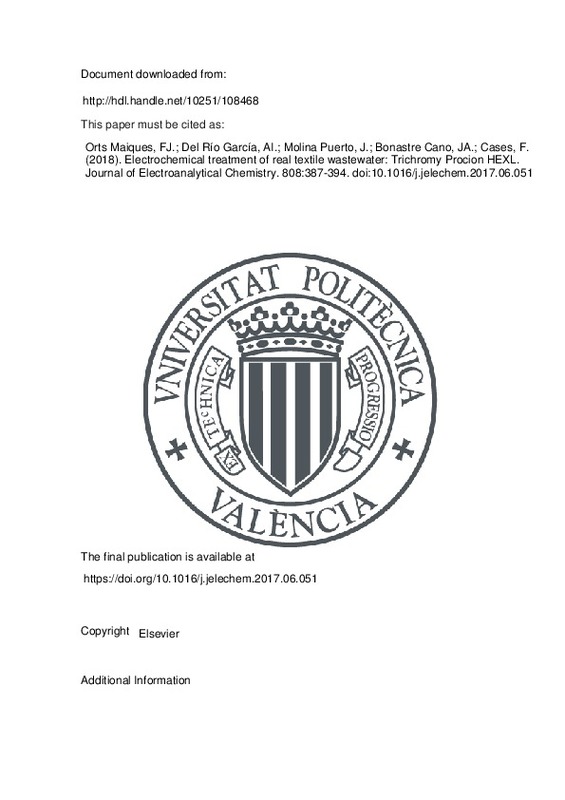JavaScript is disabled for your browser. Some features of this site may not work without it.
Buscar en RiuNet
Listar
Mi cuenta
Estadísticas
Ayuda RiuNet
Admin. UPV
Electrochemical treatment of real textile wastewater: Trichromy Procion HEXL
Mostrar el registro completo del ítem
Orts Maiques, FJ.; Del Río García, AI.; Molina Puerto, J.; Bonastre Cano, JA.; Cases, F. (2018). Electrochemical treatment of real textile wastewater: Trichromy Procion HEXL. Journal of Electroanalytical Chemistry. 808:387-394. https://doi.org/10.1016/j.jelechem.2017.06.051
Por favor, use este identificador para citar o enlazar este ítem: http://hdl.handle.net/10251/108468
Ficheros en el ítem
Metadatos del ítem
| Título: | Electrochemical treatment of real textile wastewater: Trichromy Procion HEXL | |
| Autor: | Del Río García, Ana Isabel | |
| Entidad UPV: |
|
|
| Fecha difusión: |
|
|
| Resumen: |
[EN] The electrochemical treatment of wastewaters from the textile industry is a promising technique for not easily biodegradable compounds. This work is aimed at studying the electrochemical degradation of bifunctional ...[+]
|
|
| Palabras clave: |
|
|
| Derechos de uso: | Reserva de todos los derechos | |
| Fuente: |
|
|
| DOI: |
|
|
| Editorial: |
|
|
| Versión del editor: | https://doi.org/10.1016/j.jelechem.2017.06.051 | |
| Código del Proyecto: |
|
|
| Agradecimientos: |
The authors wish to thank the Spanish Agencia Estatal de Investigacion (AEI) and European Union (FEDER funds) for the financial support (contract MAT2016-77742-C2-1-P). A.I. del Rio is grateful to the Spanish Ministerio ...[+]
|
|
| Tipo: |
|







![[Cerrado]](/themes/UPV/images/candado.png)


